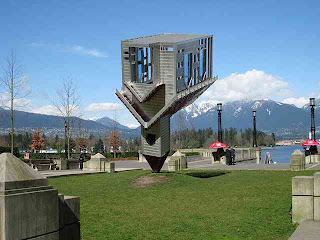Architecture can refer to a process, a profession or documentation. As a process, architecture is the activity of designing and constructing buildings and other physical structures by a person or a computer, primarily to provide shelter. As a profession, architecture is the role of those persons or machines providing architectural services. As documentation, usually based on drawings, architecture defines the structure and/or behavior of a building or any other kind of system that is to be or has been constructed.
In the late 20th century many new concept was included in the compass of both structure and function. Now days, before performing any action we keeping future in our visions. same applies in Architecture also. In the selection below, we present over 80 Strange & Fantastic Buildings Architecture of modern world. All photographs are linked and lead to the source – the respective photographers.
To restrict the meaning of (architectural) formalism to art for art’s sake is not only reactionary; it can also be a purposeless quest for perfection or originality which degrades form into a mere instrumentality”.
Among the philosophies that have influenced modern architects and their approach to building design are rationalism, empiricism, structuralism, poststructuralism, and phenomenology.
On the difference between the ideals of “architecture” and mere “construction”, the renowned 20th C. architect Le Corbusier wrote: “You employ stone, wood, and concrete, and with these materials you build houses and palaces: that is construction. Ingenuity is at work. But suddenly you touch my heart, you do me good. I am happy and I say: This is beautiful. That is Architecture”.
Please Amaze yourself by go through with all the Buildings Architecture photographs below which are linked and lead to the source photographers. Also do not forget to explore further works of these talented photographers.
Please notice that the collection presented here is supposed to only give you brief idea about modern Architecture, it always can and should be extended; Please feel free to join us as you are always welcome to share your thoughts even if you have more reference links related to Architectural Inspiration that our readers may like.
01. Device to Root Out Evil (Vancouver, Canada)
02. The Crooked House (Sopot, Poland)
03. Museum of Contemporary Art (Niteroi, Brazil)
04. ING Headquarters (Amsterdam, Netherlands)
05. Experience Music Project (Seattle, Washington, USA)
06. Dancing Building (Prague, Czech Republic)
07. Druzhba Holiday Center (Yalta, Ukraine)
08. Lotus Temple (Delhi, India)
09. Forest Spiral Building (Darmstadt, Germany)
10. The Torre Galatea Figueras (Spain)
11. Upside Down House (Szymbark, Poland)
12. The Basket Building (Ohio, USA)
13. The Ufo House (Sanjhih, Taiwan)
14. Stone House (FAFE, Portugal)
15. Kansas City Public Library (Missouri, USA)
16. Stata Center (Cambridge, Massachusetts, USA)
17. The Hole House (Texas, USA)
18. Ryugyong Hotel (Pyongyang, North Korea)
19. Container City (London, UK)
20. Erwin Wurm: House Attack (Viena, Austria)







































